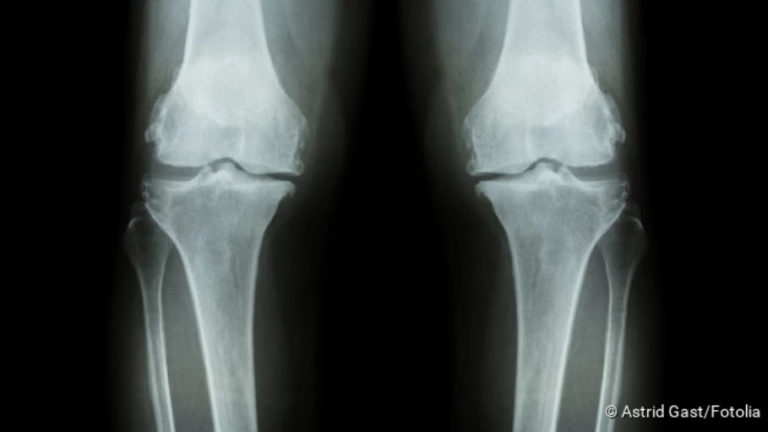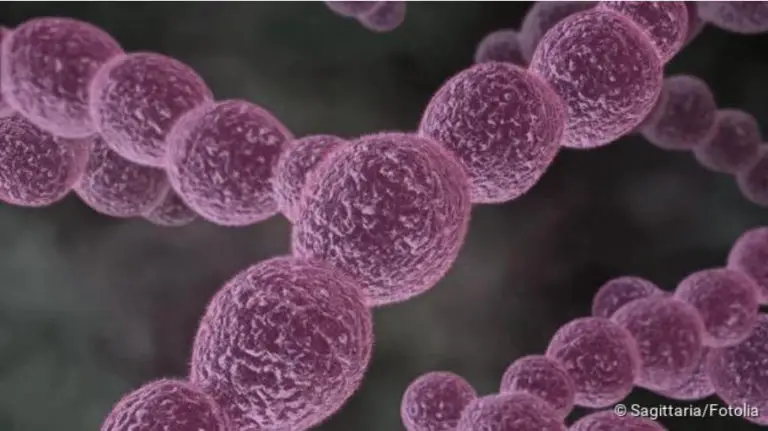Lactose intolerance: causes; triggers, symptoms, treatment
Lactose intolerance: short overview

- Causes: Deficiency of the enzyme lactase, bacteria produce gases and acids in the large intestine
- Symptoms: Abdominal pain, diarrhoea, bloating, intestinal wind, feeling of fullness, nausea, unspecific symptoms such as headaches
- Diagnosis: H2 breath test, diet/exposure test, symptoms alone provide insufficient evidence
- Treatment: Adaptation of diet, avoidance of dairy products, lactase tablets
- Prognosis: no disease, not dangerous, but restricts quality of life
Lactose intolerance: causes and triggers
Dairy products contain milk sugar, which is also known as lactose in technical terms. Lactose itself cannot be absorbed by the intestinal mucosa, only the individual sugars of which it is composed. This means that the milk sugar must first be broken down with the help of an enzyme so that it can enter the bloodstream via the intestinal mucosa. The enzyme is called lactase. It is normally produced by the mucus cells in the small intestine – but not or not sufficiently in people with lactose intolerance.
As a result, the lactose continues to migrate from the small intestine to the large intestine. There it serves bacteria as food. This leaves waste products, which then trigger the typical complaints. These waste materials include lactic acids, short-chain fatty acids and gases such as hydrogen, carbon dioxide and methane.
Although the reason for lactose intolerance is ultimately always a deficiency of the enzyme lactase, this deficiency can occur in various ways. Accordingly, the complaints are differently pronounced and can occur for the first time at different ages.
Primary lactose intolerance is very common
Actually, lactose intolerance is not a disease. Seen globally, adults who can digest lactose are actually the exception. It’s different with babies. Newborns can normally metabolise lactose without any problems. This is because breast milk also contains lactose, even more than cow’s milk. But already after the first months of life the amount of the enzyme gradually decreases.
If it falls below a certain level, lactose intolerance symptoms occur. When this point in time is reached varies. Therefore, the age at which the so-called primary lactose intolerance sets in varies. The affected persons are usually between five and twenty years old. Lactose intolerance occurs only rarely in children under five years of age. In most cases the first symptoms appear in adolescence. Primary lactose intolerance is by far the most common form of lactose intolerance.
Incidentally, the enzyme production does not stop completely. Most of those affected still have a small basic quantity of the enzyme. There are large individual variations, which is why some people with lactose intolerance still tolerate a certain amount of lactose in their food, while others react to even the smallest amounts with symptoms.
The fact that about one third of humanity can digest lactose for life is due to a genetic mutation. Scientists assume that this change in DNA originated in Central Europe about 7500 years ago. In these people, the amount of lactase also decreases, but remains high enough to continue to break down lactose.
This condition may have been a survival advantage at the time. For with the beginning of cattle breeding, milk was available in large quantities and became an important source of food. Even today, every person who has no lactose intolerance is a carrier of this genetic change.
Acquired (secondary) lactose intolerance
In contrast to primary lactose intolerance, secondary lactose intolerance is the result of another disease. The production of lactase is not reduced naturally, but by damage to the intestinal mucosa. Triggers are sometimes major operations in the gastrointestinal tract, autoimmune diseases such as Crohn’s disease or severe courses of gastroenteritis. Gluten intolerance (coeliac disease) is also often the cause of secondary lactose intolerance, because the intestinal mucosa becomes inflamed in this disease and the production of the enzyme lactase is affected.
Usually the secondary lactose intolerance decreases again as soon as the mucosal cells in the intestine have recovered. In rare cases, however, it can become chronic. In the end, this always depends on the severity of the triggering disease.
Congenital lactose intolerance in the baby
Congenital lactose intolerance is a very rare form of the disease. Due to a genetic defect, the body can either produce no lactase at all from the beginning of life, or only in tiny amounts. This is why we also speak of an absolute lactose intolerance. The affected babies get persistent diarrhoea from their mother’s milk after only a few days. Breastfeeding is then not possible. Under certain circumstances, the unsplit lactose can even enter the bloodstream directly via the stomach and intestinal mucous membrane and cause severe symptoms of poisoning. The only possible therapy is a lifelong abstinence from lactose.
However, if newborns have problems with lactose, it is not necessarily due to a congenital lactose intolerance. The digestive tract can generally react very sensitively in the first weeks of life. Sometimes lactase production does not yet run smoothly, but this problem usually disappears soon.
Lactose intolerance due to bacterial colonization of the small intestine
In some journals there is a discussion whether a wrong colonization of the small intestine with bacteria can lead to lactose intolerance. Normally, bacteria and other microorganisms are mainly found in the large intestine. This is completely normal and even very important for digestion. Under certain circumstances, however, an increased colonisation of the small intestine may occur, which is problematic.
On the one hand, the mucosa of the small intestine – and thus the production of lactase – can be affected by the incorrect colonisation, and on the other hand, the bacteria in the small intestine start to decompose the lactose before it can be split by the lactase. There are still no clear research results to confirm this assumption. However, some studies show that in some cases, lactose intolerance disappears as soon as the small intestine deficiency is treated with antibiotics.
Lactose intolerance: symptoms
The following symptoms are typical of lactose intolerance:
- Expanded stomach
- Feeling of fullness
- Bowel Winds
- loud bowel sounds
- Abdominal pain
- Nausea, rarely also with vomiting
- Diarrhoea
Flatulence and abdominal pain are caused by the gases that bacteria in the large intestine produce when they break down lactose. Other waste products that are formed in the process, namely lactic and fatty acids, have a “water-soluble” effect. As a result, more fluid flows into the intestine and causes diarrhoea.
The complaints are often made worse by the fact that those affected are embarrassed by the sometimes foul-smelling intestinal winds, which is why they understandably hold them back in public. If the air cannot escape, the intestine continues to stretch and the abdominal pain increases.
Paradoxically, lactose intolerance can also lead to constipation. This is the case when lactose decomposition produces mainly methane. This gas slows down intestinal activity and thus causes constipation.
FAQ
In relation to the world population, lactose intolerance in adulthood is normal and not a disease. Only northern European populations have acquired the ability to digest lactose over time. In Germany about 15 (-20) percent of the population is lactose intolerant, in Asian and African populations up to 90 percent. By the way, the lactose tolerance decreases the older you get.
Unfortunately not in the primary (congenital) form. In the secondary, acquired form (i.e. as a result of other diseases, e.g. celiac disease, inflammation of the small intestine, diverticula) already, after treatment of the underlying disease. For everyone else, it means avoiding lactose or counteracting with lactase tablets. By the way, you need not be afraid of tablets containing lactose – their lactose dosage is beyond effectiveness.
What influences the symptoms of lactose intolerance?
The symptoms of lactose intolerance described above can vary greatly from person to person. Some people have pronounced complaints after every lactose-containing meal, others feel little more than a slight discomfort. The following factors essentially influence the lactose intolerance symptoms:
Degree of lactase deficiency
Behind lactose intolerance is a deficiency of the enzyme lactase. This lactase deficit varies greatly from individual to individual. In some people affected, almost no enzyme is produced at all, while others still have a certain amount and usually do not feel any discomfort if they consume a smaller amount of lactose.
Lactose content of the meal
Of course, the lactose content in a meal plays a decisive role. The more milk sugar it contains, the more severe the symptoms of lactose intolerance are. The further composition of the food also has an influence. Depending on the other nutrients with which lactose is absorbed, this can have different effects on processing in the intestine.
Composition of the intestinal flora
In every person, the colon is home to somewhat different bacteria (= intestinal flora). The better these roommates are able to break down the lactose, the more severe are the complaints of lactose intolerance. Not only does the amount of gas produced vary, but the microorganisms also produce different gases. For example, if they produce predominantly carbon dioxide, the intestinal winds are less malodorous than if they produce more methane.
Speed of food transport
Although the path taken by food during digestion is the same for all people, the time it takes to digest it is not. Up to the stomach there are hardly any differences, but how fast the food pulp is transported through the intestines varies greatly from person to person.
This in turn has an influence on the lactose intolerance symptoms. The longer the food pulp remains in the small intestine, the more time the lactase has available to break down the lactose. If it moves on quickly, more undigested lactose reaches the large intestine and causes the typical symptoms. The transport time in the small intestine varies between one and two and a half hours, but in some people it is even outside this range. Accordingly, the time after which lactose intolerance symptoms appear in those affected also varies.
Personal experience of pain
Every person perceives pain differently. Where some have long since gone to the doctor, others hardly notice anything. Even with lactose intolerance, the symptoms feel different from person to person. Lactose intolerance pain is caused by excessive stretching of the intestine. Patients with irritable bowel syndrome, for example, generally have an increased sensitivity to pain in the gastrointestinal tract. If these people also have a lactose intolerance, they perceive it all the more strongly. On the other hand, it may also be the case that someone has been shown to be unable to digest lactose, but still feels no or only minor lactose intolerance symptoms.
Lactose intolerance symptoms outside the gastrointestinal tract
In addition to gastrointestinal complaints, lactose intolerance can also cause the following unexpected symptoms:
- Headache
- Fake
- Memory disorders
- Loss of drive
- Limb pain
- Acne
- Depressive moods
- Insomnia
- Weld outbreaks
- Cardiac arrhythmia
These lactose intolerance signs are not typical, but in some cases they can be in addition to the gastrointestinal symptoms or even occur on their own. In the latter case, food intolerance is difficult to detect.
How lactose intolerance outside the gastrointestinal tract can cause complaints is still under discussion. A possible explanation: the bacterial decomposition of lactose in the large intestine produces toxic metabolic products that enter the blood. These could cause problems in various body structures (especially in nerve tissue).
Lactose intolerance: test
The so-called hydrogen breath test or H2 breath test is most frequently used to diagnose lactose intolerance. It is based on the fact that the intestinal bacteria also produce hydrogen gas when they decompose milk sugar. This can be detected in the exhaled air. Other diagnostic options are the lactose tolerance test, genetic test, small intestine biopsy or the diet/exposure test.
How the individual tests work in detail and which advantages and disadvantages they have in each case, you can read here: Lactose intolerance test
Lactose intolerance: diagnosis
Lactose intolerance cannot be clearly diagnosed on the basis of the typical symptoms. This is because gastrointestinal complaints also occur with many other food intolerances and other diseases of the gastrointestinal tract. For example, an allergy to cow’s milk can also cause the typical symptoms of lactose intolerance – specific allergic complaints are not always added.
In addition, everyone has flatulence and abdominal pain from time to time, so that these symptoms are often not associated with lactose intolerance for a long time and are not always immediately recognised by doctors as lactose intolerance symptoms.
Lactose intolerance: When do you need to see a doctor?
If you or your child experience persistent gastrointestinal complaints, you should always consult your doctor to find the cause. The right contact person if lactose intolerance is suspected is the family doctor or a specialist for internal medicine. He already receives important information by describing your complaints (anamnesis). It can also be useful to keep a diary in which you document your meals and any complaints that may arise. Possible questions from the doctor could be, for example
- Do you suffer from stomach aches, flatulence and diarrhoea after eating dairy products?
- How long have the complaints existed?
- Are there any known cases of lactose intolerance in your family?
- Do you have other intestinal diseases (gastroenteritis, Crohn’s disease, etc.?)
- Are you taking any medicine?
The anamnesis interview is followed by a physical examination. The doctor listens to the bowel sounds with the stethoscope and carefully palpates the abdomen. The physical examination serves primarily to rule out other causes for the symptoms. This usually requires further examinations such as a blood count with determination of the inflammation values or an ultrasound.
If there is a reasonable suspicion of lactose intolerance, the next step is to try a temporary low-lactose diet. If the symptoms improve, lactose intolerance is very likely. However, only special lactose intolerance tests provide definitive certainty.
Lactose intolerance: treatment
Since lactose intolerance is not a disease, it cannot be cured. However, with a lactose-poor/free lifestyle one can live largely free of complaints. An artificial supply of the missing enzyme lactase via tablets is also possible if required.
Lactose intolerance: nutrition
The most important measure in case of lactose intolerance is an adjustment of the diet. This is not easy at the beginning, because you have to do without many things that were previously part of the menu. Nevertheless, the most important rule in lactose intolerance nutrition is: Keep your hands off anything that contains increased lactose. However, each person has a different tolerance level with regard to the amount of lactose they can tolerate. The only way to find out is to try it out. Some products also contain far less milk sugar than many people think.
Lactose-free” refers to products that contain a maximum of 0.1 grams of lactose per 100 grams of food. These small amounts are normally tolerated by people with lactose intolerance without any problems. Many affected people do not yet experience any symptoms even if they have a content of 1 g lactose/100 g food.
Lactose intolerance: foods with low lactose content (≤ 1 g/100 g)
The following foods have a lactose content of ≤ 1 g lactose per 100 g food. As a rule, they are very well tolerated. The general rule for cheeses is that the longer the cheese is matured, the lower the lactose content. Therefore hard cheeses such as Parmesan or ripe Gouda are usually well tolerated:
| Food | Grams of lactose per 100 g of the food |
| Parmesan and other long ripened cheeses | approx. 0 – 0,05 |
| Clarified butter, clarified butter | approx. 0,1 |
| Camembert | approx. 0.1 – 1 |
| Butter | approx. 0,5 – 1 |
| Mozzarella, Brie | approx. 0,5 |
| Feta cheese | approx. 0,5 – 1 |
| Dark chocolate | approx. 0,5 |
Lactose intolerance: foods with moderate lactose content (1 to 5 g/100 g)
The following foods have a moderate content of 1 to 5 g lactose per 100 g of food. While some people with lactose intolerance can still tolerate these foods without any problems, they can already cause complaints in others:
| Food | Grams of lactose per 100 g of the food |
| Nut nougat cream | approx. 1,5 – 3,0 |
| Mascarpone | approx. 2,5 |
| Sour cream | approx. 3 |
| Cream | Approx. 3.3 |
| Curd | approx. 3 – 4 |
| Yoghurt | approx. 3 – 4,5 |
| Cottage cheese | approx. 4 |
| Buttermilk | approx. 4 – 5 |
Lactose intolerance: foods with a particularly high lactose content (> 5 g/100 g)
The following foods often contain more than 5 g of lactose per 100 g of food. Due to their high lactose content, they can cause discomfort for people with lactose intolerance:
| Food | Grams of lactose per 100g of the food |
| Milk | approx. 5 |
| Processed cheese | approx. 6 |
| Ice cream | approx. 7 |
| Milk chocolate | approx. 10 |
| Evaporated milk | approx. 10 |
| Skimmed milk powder | approx. 50 |
| Whey powder | approx. 70 |
Many foods may contain lactose, although it is not suspected. Especially with finished products you should read the list of ingredients carefully.
- Margarine (often also lactose-free)
- Baked goods of all kinds
- Spreads
- Ready meals (such as instant soups, canned food, mashed potato powder)
- Canned fish
- Canned vegetables, for example pickles
- Mixed spices
- Muesli mixtures
- Salad dressing, pesto, mayonnaise
- Meat and sausage products, including ham
Many drugs also contain lactose as a binding agent, but mostly in irrelevant quantities. However, always read the package leaflet containing the ingredients carefully before taking the product and consult a doctor or pharmacist if necessary.
The food industry likes to use lactose as a filling agent to give food a “fuller” taste in the mouth. This is why lactose is also found in bread, meat and many ready-made dishes. But even here the lactose amounts are usually negligible.
For professional advice on the correct diet for lactose intolerance, you can also consult a trained dietician.
Products for people with lactose intolerance
In recent years, the industry has increasingly brought products for people with lactose intolerance onto the market. They then no longer contain lactose and are specially labelled.
For those who do not want to do without dairy products, lactose-free dairy products are a good choice, especially to prevent calcium deficiency. In some cases, however, the label “lactose-free” is used for advertising purposes, even if the product does not contain lactose from the outset. Here it is worth comparing prices and looking at the contents of the food from other suppliers. Even if lactose-free food may seem a bit like a lifestyle product at the moment, people without lactose intolerance do not benefit from them and unnecessarily lighten their wallets.
Complication: Osteoporosis and calcium deficiency
When doing without dairy products, the body is often not sufficiently supplied with calcium – there is a risk of osteoporosis. That is why it is sometimes necessary to take calcium supplements. Discuss this with your attending physician. It is also a good idea to include other calcium-rich foods on the menu more often, apart from dairy products, such as green leafy vegetables, coconut flakes or sesame seeds. In children in particular, a calcium deficiency and thus a bone mineralisation disorder can occur if they avoid dairy products. However, lactose intolerance is rarely the sole cause of osteoporosis.
Lactose intolerance: medication
Anyone who, despite lactose intolerance, has a desire for apple strudel with vanilla sauce or chocolate ice cream can prevent the symptoms by taking lactase tablets or capsules just before or during a meal. The tablets provide the body with lactase, which it can no longer produce itself. The amount of enzyme per tablet is given in the unit FCC (“Food Chemical Codex”). Per five grams of lactose, 1000 FCC are recommended.
Estimating the lactose content of a meal is very difficult and requires a lot of experience. However, there is no need to be afraid of an overdose of lactase – the enzyme does not cause any harm. When in doubt, it is better to take too much lactase than too little. As the preparations are usually relatively expensive and are not paid for by the health insurance company, they are not suitable for the long-term therapy of lactose intolerance, but they do allow a little “sin” to be committed now and then when eating.
However, if you are taking iron tablets at the same time, you must be careful because there is an interaction between the drugs. The intake should therefore be at least three hours delayed. Also note that there are a large number of non-standardised preparations containing lactase available on the market. It is best to ask your doctor or pharmacist to recommend a suitable preparation.
Lactose intolerance: course of disease and prognosis
Lactose intolerance is neither life-threatening nor does it limit life expectancy. You should only be aware of the discomfort that can be caused by dietary errors. Most of those affected are free of symptoms with a low lactose diet. If the symptoms persist despite the correct lactose intolerance diet, another cause, for example irritable bowel syndrome, may also be behind it. To rule this out, you should have yourself tested by a doctor for lactose intolerance.
Lactose intolerance: Frequency
.Specialist books estimate the number of people affected globally at around 70 percent. Overall, a strong north-south divide is becoming apparent. In Northern Europe and North America the figures are similar.. In Russia, too, less than half of the population has lactose intolerance. A completely different picture emerges in South America, Africa and Asia.
Lactose intolerance is the normal case there. In China and Southeast Asia the rate is almost 100 percent. Even in Southern Europe the majority is already lactose intolerant. The reason for this geographically different distribution of lactose intolerance is genetic.





